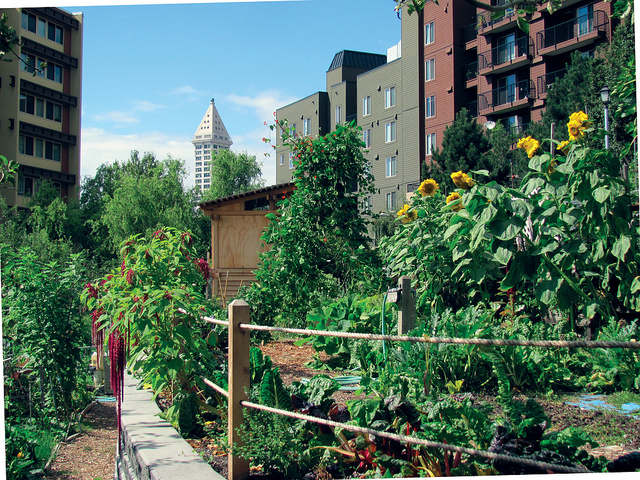The Facts About City Blooming Revealed
The Facts About City Blooming Revealed
Blog Article
City Blooming Fundamentals Explained
Table of ContentsSome Known Factual Statements About City Blooming Little Known Questions About City Blooming.City Blooming Can Be Fun For EveryoneHow City Blooming can Save You Time, Stress, and Money.Our City Blooming Diaries
Interested in expanding food up for sale in the City of Chicago? Considering beginning a neighborhood garden? Changes to the Chicago Zoning Ordinance allow farming usages like community yards and metropolitan farms in numerous parts of the city. Below is a list of frequently asked questions regarding the rules and laws that cultivators ought to take into consideration when intending a metropolitan agriculture task.
The zoning amendment does not change any type of various other codes taking care of composting, building licenses, purchasing or leasing City had residential property, business licenses or environmental contamination. There are existing codes that control these concerns and they stay completely effect and might apply to your task. Area yards are usually possessed or handled by public entities, public organizations or community-based companies and preserved by volunteers.
Urban ranches grow food that is meant to be offered, either on a not-for-profit or for-profit basis. Due to their commercial function, city farms need a company permit. Yes. An area yard is allowed to market excess create that was grown on website if the sales are accessory or secondary to the yard's primary function explained above.
What Does City Blooming Do?
Composting is allowed but only for plant material that is created and made use of on website. The quantity of garden compost material can not go beyond 25 cubic backyards at any type of offered time according to the standards in 7-28-715 of the City's Municipal Code. Yes. Because the dirt at the majority of new garden sites needs amending, garden compost, dirt, wood chips, or other materials can be gotten to create or improve the growing space - sustainability.

If a building permit is called for after that the hoophouse will be thought about an accessory building. You can learn more about the structure authorization demands by calling the Department of Buildings. The 25,000-square-foot dimension limitation is meant to stop a single area garden from dominating an offered block or detracting from the block's existing domestic or business personality.
The limitation does not apply to gardens found in Public Open Room (POS) districts. Can there be more than one area garden that is 25,000 square feet on a single block? Fence is not called for, nevertheless, gardens that have large car parking areas may be called for to mount fence or various other landscape design attributes.
The 2-Minute Rule for City Blooming
B1 & B2 districts require that all commercial usage tasks be performed inside your home. Is secure fencing needed for urban farms? Fencings may be required, along with landscaping and testing, for specific parking locations and exterior job or storage areas depending on area and the certain task taking place.
Urban ranches call for building licenses and zoning approvals prior to construction (sustainable gardening). Other types of city testimonial may be needed depending on specific frameworks, tasks, dimension, landscape design, licensing, public health and stormwater administration problems.
Yes. The type of license is identified by what is occurring at the site. The Division of Business Matters and Consumer Defense can assist figure out the details sort of service certificate that's called for. Yes. Off road car park is needed for the majority of commercial projects in Chicago. The required variety of car parking spaces is based upon the number of staff members dealing with website and Resources not the square footage of the growing room.
9 Easy Facts About City Blooming Explained

Yes. A city farm can offer garden compost material generated on website, however, the procedure must abide by the regulations in 7-28-715 of the Chicago Municipal Code. Yes. Aquaponic systems are permitted inside your home on city farms in several zoning districts. However, a zoning testimonial and building license is needed in order to install structures or systems and a company certificate is needed as explained over.
Up to 5 hives or swarms of honey might be maintained as an accessory use. Nonetheless, beekeepers must register with the Illinois Department of Farming. For more details regarding the proposed zoning amendment you may contact the Division of Real Estate and Economic Development, Bureau of Preparation and Zoning at 312.744.8563.
Farming in cities and metropolitan areas A city farm in Chicago. Urban agriculture refers to numerous practices of cultivating. https://dzone.com/users/5164299/cityblooming.html, processing, and dispersing food in city areas. The term also puts on the area activities of animal husbandry, tank farming, beekeeping, and gardening in an urban context. Urban farming is identified from peri-urban farming, which occurs in backwoods at the side of suburbs.
Getting My City Blooming To Work
, who seek to develop social networks founded on a common ethos of nature and community holism. These networks can develop by means of official institutional support, coming to be incorporated right into local town planning as a "transition town" motion for sustainable metropolitan development.
Some of the first proof of metropolitan agriculture comes from Mesopotamia.
Report this page